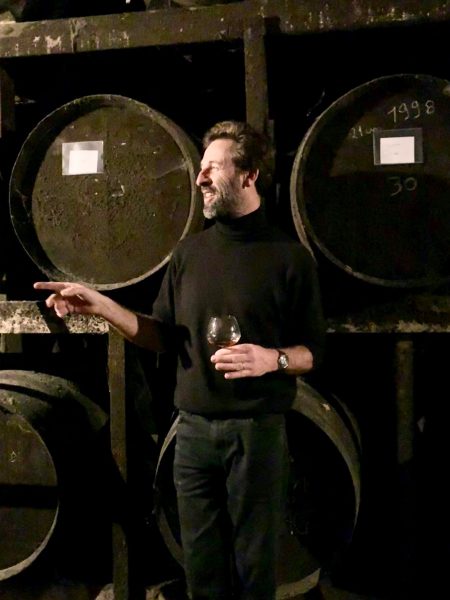Chateau de Briat
After changing ownership several times, the domaine was taken over by Baron Raoul de Pichon-Longueville in 1864. The Pichon-Longueville family already owned the famous vineyard of the same name in Pauillac, and the family used the Briat estate as a country retreat while continuing the château’s tradition of distilling a percentage of the harvest every year for Armagnac. This part of the château’s lineage is still reflected on each label of Château de Briat, which proudly bears the Baron’s name. As time progressed, however, the estate came to be owned exclusively by the Baron’s maternal ancestors, the de Luze family.
In 2003, the domaine’s owner and master distiller, Gilles de Luze, and his wife, Adeline, tragically lost their lives in a car accident on the way home from a local trade show in Paris. Their son, Stephane—who was in his 30s at the time—suddenly found himself at the helm of this prestigious estate. Today, Stephane continues his family’s notable heritage while endeavoring to impart his own distinct mark on the world of Armagnac. Stepping into the chai, ancient wooden beams overhead, or strolling through the château and admiring the original tableaus depicting Henri IV’s hunts, history feels ever-present on the estate but never stagnant or overbearing; this is a testament to Stephane’s warm and gracious energy and his deft balance of respecting the past while rooting the domaine’s vitality in the now.
Currently, the domain has eight hectares of vines, planted in sandy soil with Folle Blanche, Baco, and a minority share of Colombard. Vine cultivation, vinification, distillation, and cask aging is varied to suit each vintage, and in the majority of instances, fermentation is achieved without added yeast. Stephane maintains his father’s traditions, distilling each varietal separately on a traveling, wood-fired alambic Armagnacais (scaled-down version of a modern column still) from the early 1900s. (As Stephane continues to make improvements to this historic estate, the goal of establishing an on-site still is top ranked.) After three years, the brandy is transferred from new, 420-liter oak to older casks, and apart from an airing that occurs once a year, they are left to rest in the domain’s spacious yet primitive chai, built in 1724. Topping up is not practiced; de Luze prefers to let levels fall, promoting air contact to round out the spirits, which often experience about twenty-five percent evaporation throughout their evolution. Assemblage of varietals takes place after a minimum of four years and, at times, not until their tenth birthday, but bottling rarely takes place until at least fifteen to twenty years of age.




